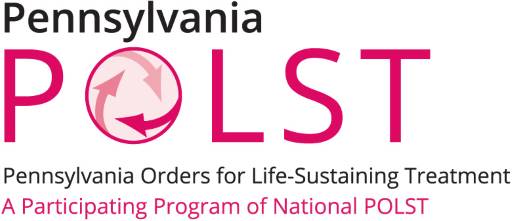Hospice and the Pennsylvania Orders for Life Sustaining Treatment — POLST
Published on January 6, 2023
Updated on July 12, 2024
Published on January 6, 2023
Updated on July 12, 2024

A review of the implications of each choice for the terminally ill patient as well as the loved ones of those who are terminally ill. This form comes into practice typically under two conditions… no pulse and is not breathing OR has a pulse and/or is breathing (but while not mentioned, is typically in the last two weeks of life if no measures are taken with the understanding that any measures do not guarantee a longer time frame). Let’s review the form below:

“A” — check one: CRP/Attempt Resuscitation. This area states attempt because CPR does not guarantee success! Even for the healthy, the success rate for CPR is extremely low! In the hospital setting, surrounded by doctors, nurses, nurse aides, therapists, other patients, and families, the success rate is a twenty percent survival rate, with eighty percent of those who survived having some health status change in a negative direction, which for some people can be a lifelong disability. The success rate drops to around two percent in a nursing home setting and private home setting.
The process of CPR involves a purposeful, violent attempt to restart the person’s heart and often involves fractured ribs that have the potential to damage other organs.
The other choice is DNR/Do not attempt Resuscitation (Allow Natural Death). This is often the preferred choice for anyone who is terminally ill and on hospice because the goal of hospice is comfort care through the end-of-life journey without the purposeful intent to slow things down OR speed things up. This also means a death with dignity vs. a violent procedure to try and restart the heart, which fails most of the time.
“B” Medical interventions (DNR does not equal do not treat). This section is intricately connected to “A” in practice. IF “CRP” is attempted and is successful, the choice is typically limited to additional interventions or full treatment. Both often involve going to the hospital. While some nursing facilities can provide IV fluids (extremely dangerous at the end of life with a high potential to cause your loved one to suffer), most nursing facilities do not provide cardiac monitors or advanced treatment that would be included in full treatment.
Comfort measures only typically go with DNR, which aims to allow peaceful passing. Pennsylvania does allow for ala cart choices where a patient, power of attorney, and the like can check, attempt CPR, and then use comfort measures only, but keep in mind the result from a practical standpoint is commit extreme violence against the person’s body in an attempt to restart the heart, then provide comfort for the damage done. This is counterproductive from a hospice philosophy point of view because the entire goal is comfort…
Sections “C” and “D” can occur at any time before death, with “D” often being brought up during the last two weeks of life.
Section “C” Antibiotics. The first choice can lead to extremely painful and uncomfortable situations if the patient develops sepsis, where hospice pain medications may only be partially effective. The second choice provides the most comfort for the patient. The third choice never makes sense from a practical sense because “if life can be prolonged,” it cannot be guaranteed by anyone.
Section “D” Artificially administered hydration and nutrition deal with the dignity of allowing the patient to say they are not hungry or thirsty and avoid being forced into nutrition artificially and to pass naturally. That’s the first check box (nothing artificial). The second choice is a nasogastric tube that is inserted into the patient’s nostril and down into their stomach, which is an extremely uncomfortable procedure to have done. Then, there’s a trial of hydration and nutrition to see if the patient tolerates it, as evidenced by not vomiting up the food, not aspirating on the food, and not going into fluid overload, which is potentially extremely painful. The third option is surgery for a feeding tube. While it can be viewed as being more comfortable (since one is sedated for the operation to place the feeding tube), having one is an extremely substantial risk for fluid overload, aspiration pneumonia, and other problems because there is zero science on how much food a dying person can be force-fed.
I’m using blunt language because often, the person filling out the form (and this could be the patient) is looking for some hope (i.e., have some chicken noodle soup, and you will feel better) without realizing the ramifications of those choices.
In my experience as a hospice nurse, the most comfortable deaths include the following choices:
Lastly, always remember that this form is not a contract written in stone. It can be changed easily, even at the last minute, with a call to the appropriate provider.
End-of-Life Decisions: Don’t wait until it’s too late for advanced directives
Providing Comfort During the Last Days of Life with Barbara Karnes RN (YouTube Video)
Preparing the patient, family, and caregivers for a “Good Death.”
Velocity of Changes in Condition as an Indicator of Approaching Death (often helpful to answer how soon? or when?)
The Dying Process and the End of Life
As an Amazon Associate, I earn from qualifying purchases. The amount generated from these “qualifying purchases” helps to maintain this site.
Gone from My Sight: The Dying Experience
The Eleventh Hour: A Caring Guideline for the Hours to Minutes Before Death